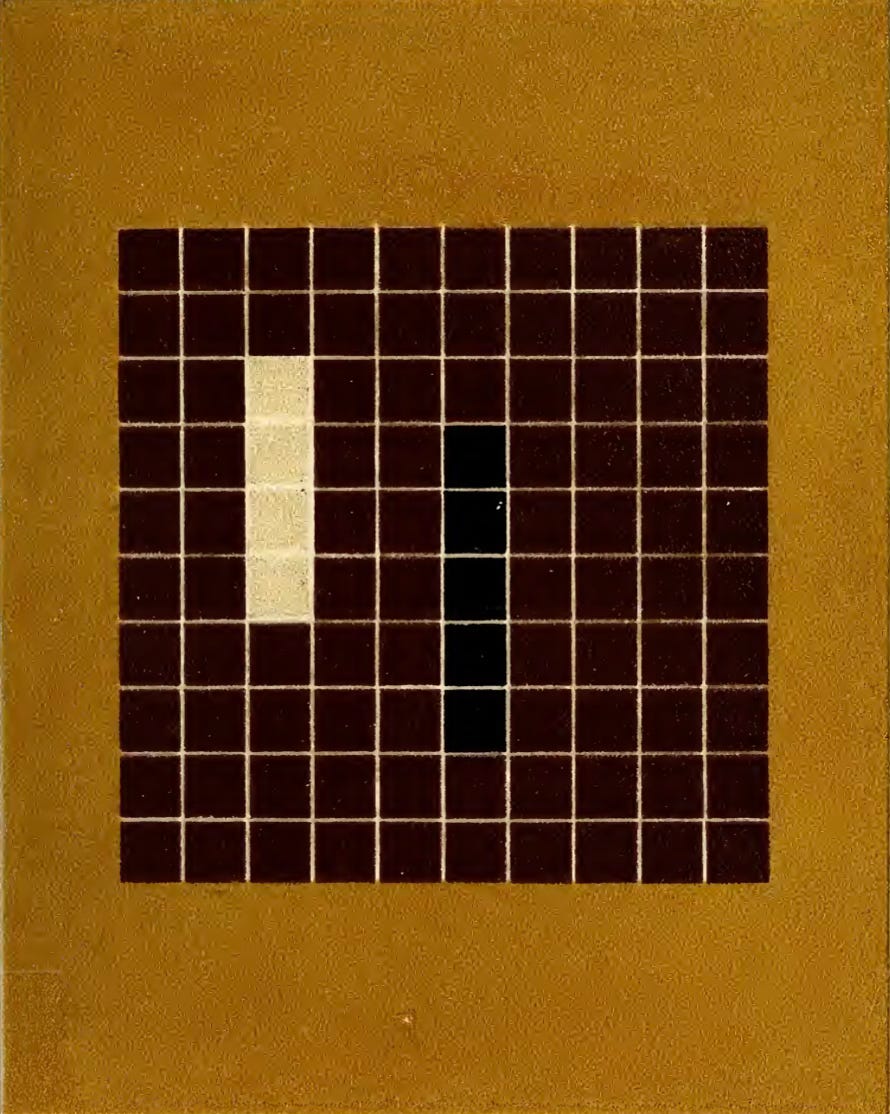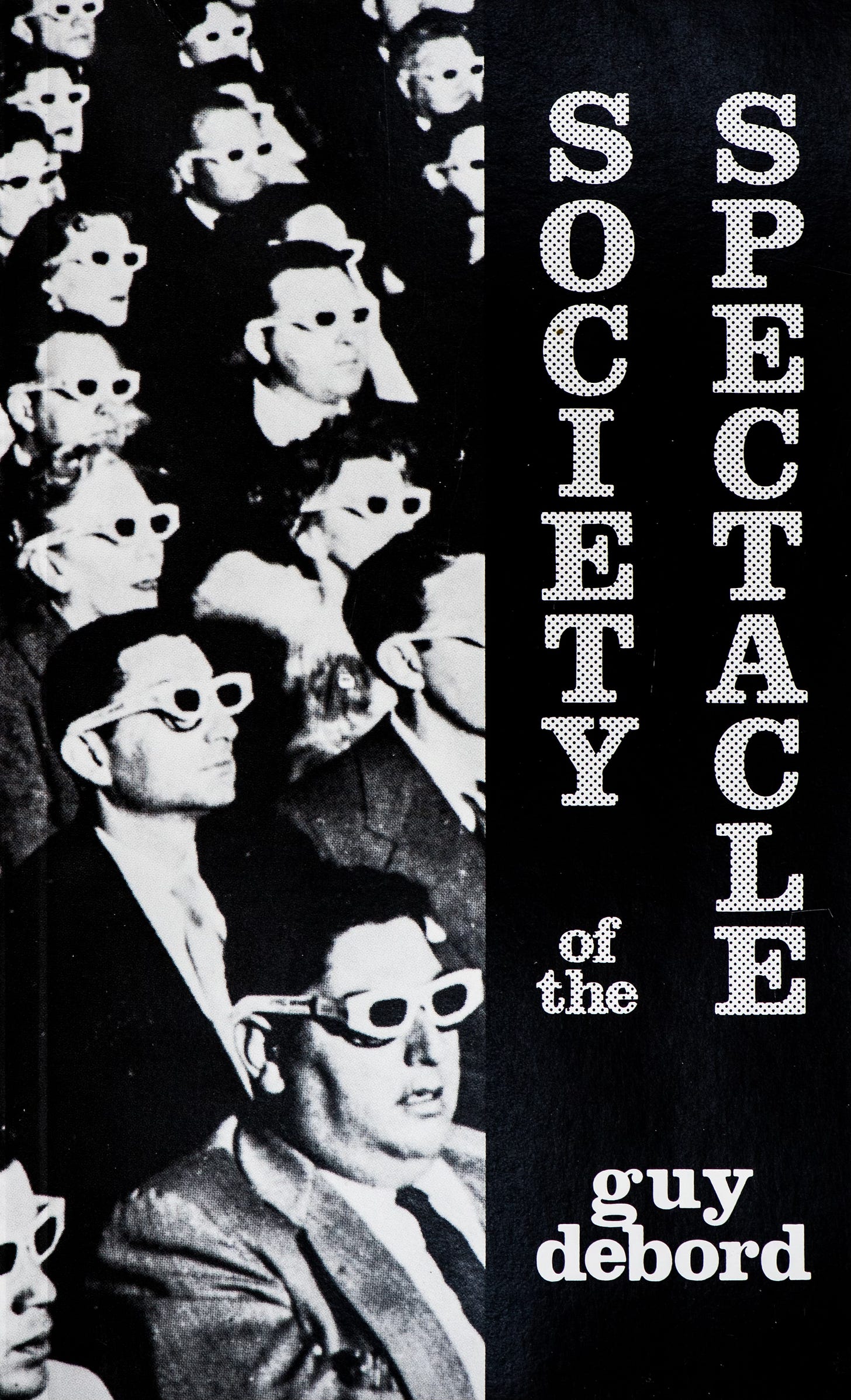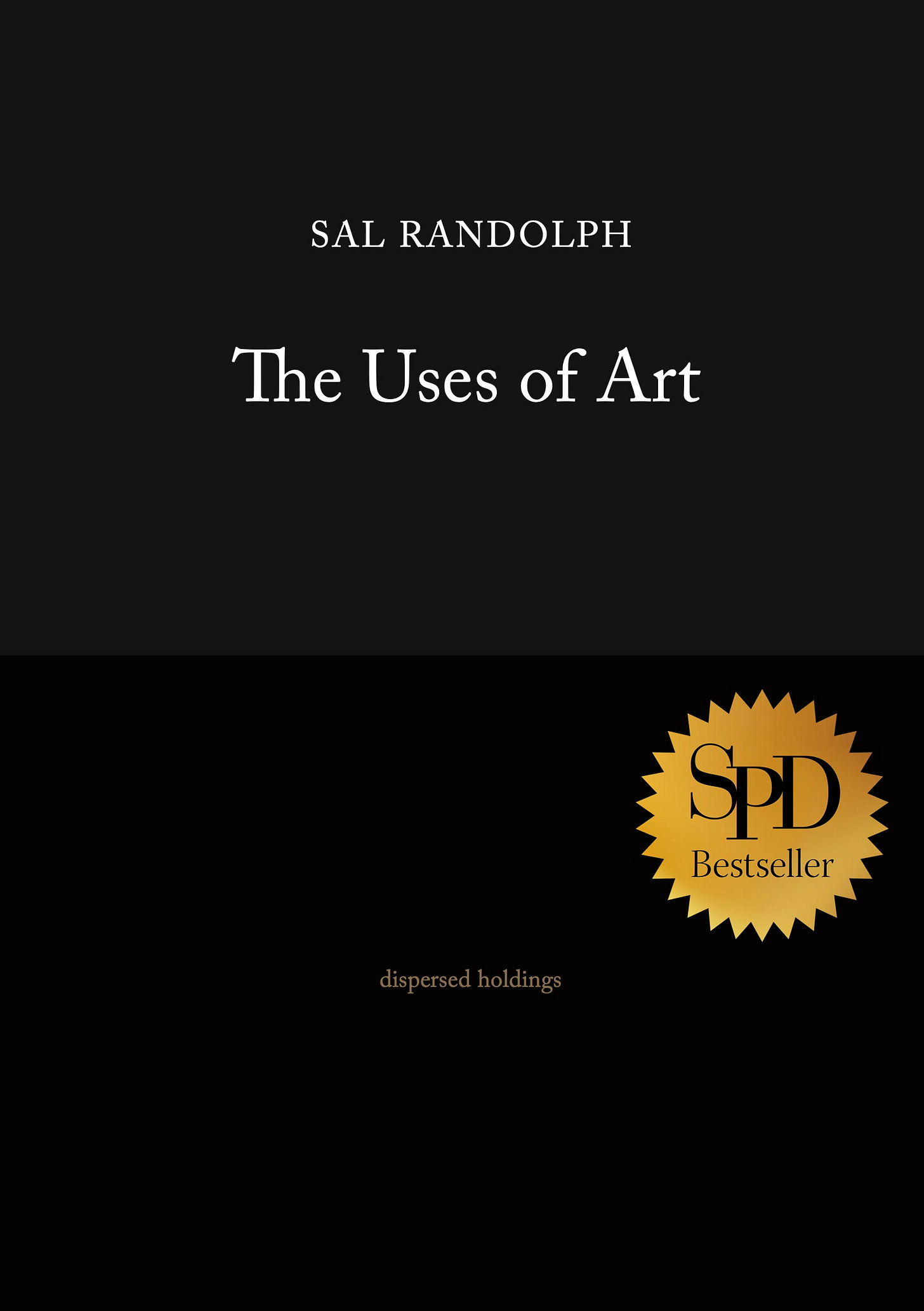
Dear Friends,
The current situation is, among other things, a crisis of attention. We’ve all been experiencing government-by-spectacle, and it’s dizzying. This week I look at spectacle as a form of attention-capture and explore some ways that we can free ourselves from its thrall.
— Sal
Spectacle is Attention-Capture
A spectacle is a situation constructed so as to maximize attention. Stage and audience are playing with and against each other in a symbiotic relation. Both create the division of attender and attended-on, which is spectacle’s key feature. In spectacles of celebrity, as in museum spectacles, there is a simultaneous division of value: what is displayed, exhibited, made visible, is valuable; what looks, what remains in the darkened theater or on the sidelines is, within the context of the spectacle, nothing but sheer quantity, a mass. The audience is almost like a power source—electricity, oil, natural gas—a commodity defined by its availability or lack. Nothing of the audience is wanted besides their sheer presence and attention. They are hardly to be made known to each other, and must not impinge on the attention of the performer or distract from the flow of attention towards the platform.
And yet, in another sense, it is all meant to be for the audience, made possible by the audience. The spectacle exists entirely because of the audience’s desire. It could have neither body nor meaning otherwise. The fame of the celebrity is a gift given by the fan.
Spectacle is a form of attention-capture: the attention commanded by the spectacle is an attempt to transmute the voluntary attention of individuals into the involuntary attention of a mass.
Freeing the Spectator
We might take as our competing theorists of the spectacle on the one hand Guy Debord (The Society of the Spectacle, 1967), and on the other Jacques Rancière (The Emancipated Spectator, 2009). Debord’s model of contemporary life is the enthralled movie audience writ large, a world in which people watch a flow of images rather than partake in life directly: “All that once was directly lived has become mere representation.”
Rancière, in rebuttal, reminds us that contemplation can be active, creative, critical. The capture of the spectacle is never complete. The audience daydreams, grows bored, resists, free-associates, and makes use of the drama in ways never intended by its makers or players. “The spectator also acts, like the pupil or scholar,” he says. “She observes, selects, compares, interprets. She links what she sees to a host of other things that she has seen on other stages, in other kinds of place. She composes her own poem with the elements of the poem before her.”
Excerpted from The Uses of Art.
Guy Debord - The Society of the Spectacle
1
In societies where modern conditions of production prevail, life is presented as an immense accumulation of spectacles. Everything that was directly lived has receded into a representation.
2
The images detached from every aspect of life merge into a common stream in which the unity of that life can no longer be recovered. Fragmented views of reality regroup themselves into a new unity as a separate pseudo-world that can only be looked at. The specialization of images of the world has culminated in a world of autonomized images where even the deceivers are deceived. The spectacle is a concrete inversion of life, an autonomous movement of the nonliving.
3
The spectacle presents itself simultaneously as society itself, as a part of society, and as a means of unification. As a part of society, it is ostensibly the focal point of all vision and all consciousness: But due to the very fact that this sector is separate, it is in reality the domain of delusion and false consciousness: the unification it achieves is nothing but an official language of universal separation.
4
The spectacle is not a collection of images; it is a social relation between people that is mediated by images.
…
23
The root of the spectacle is that oldest of all social specializations, the specialization of power. The spectacle plays the specialized role of speaking in the name of all the other activities. It is hierarchical society's ambassador to itself, delivering its messages at a court where no one else is allowed to speak. The most modern aspect ofthe spectacle is thus also the most archaic.
24
The spectacle is the ruling order's nonstop discourse about itself, its never-ending monologue of self-praise, its self-portrait at the stage of totalitarian domination of all aspects of life. […]
…
29
[…] In the spectacle, a part of the world represents itself to the world and is superior to it. The spectacle is simply the common language of this separation. Spectators are linked solely by their one-way relationship to the very center that keeps them isolated from each other. The spectacle thus reunites the separated, but it reunites them only in their separateness.
From Guy Debord The Society of the Spectacle (originally 1967), Translated by Ken Knabb, Bureau of Public Secrets (2014/2024).
Jacques Rancière - The Emancipated Spectator
Emancipation begins when we challenge the opposition between viewing and acting; when we understand that the self-evident facts that structure the relations between saying, seeing and doing themselves belong to the structure of domination and subjection. It begins when we understand that viewing is also an action that confirms or transforms this distribution of positions. The spectator also acts, like the pupil or scholar. She observes, selects, compares, interprets. She links what she sees to a host of other things that she has seen on other stages, in other kinds of place. She composes her own poem with the elements of the poem before her. She participates in the performance by refashioning it in her own way – by drawing back, for example, from the vital energy that it is supposed to transmit in order to make it a pure image and associate this image with a story which she has read or dreamt, experienced or invented. They are thus both distant spectators and active interpreters of the spectacle offered to them.
This is a crucial point: spectators see, feel and understand something in as much as they compose their own poem, as, in their way, do actors or playwrights, directors, dancers or performers.
From Jacques Ranciere, The Emancipated Spectator, translated by Gregory Elliott, Verso Books.
Exercise: Spectacle & Anti-Spectacle
The object of attention in this exercise is yourself.
Begin by allowing yourself to experience a spectacle. This could be the theater of politics, but it could also be a movie, or your social media scroll. Give yourself some time to become absorbed, and then begin to watch your own mind and emotions.
Now your attention has two channels: one is the original spectacle, and the other is your responding mind. Gradually shift more of your awareness from the spectacle to your response. This might take some practice.
Observe the character of your response. Is your response more like a movie, or more like a conversation? Are your emotions aroused? Are you bored? Are you agreeing? Arguing? Remembering the past? Daydreaming or free-associating?
Ask yourself what it is that you are making.
Afterwards, take note of what you discovered. Consider writing it down or sharing with a friend. Add your thoughts to the comments.
As with all of these “Ways of Seeing,” the initiating impulse is to expand our possibilities for engaging with works of art and deepening attention to everything around us. These exercises are perfect for time spent in museums, galleries, and studios. You can also bring them into the rest of your life and experiment with streets, libraries, parties, landscapes. Try them as writing or art-making prompts.
These practices work best if you give them some time.
As ever, interpret these instructions freely and intuitively. Make them your own.
The title Ways of Seeing is an homage to the continuing inspiration of the BBC TV series and book by John Berger.
Society of the Spectacle
Guy Debord’s Society of the Spectacle is uncopyrighted and is widely available online, including at the Bureau of Public Secrets.
The Emancipated Spectator
Jacques Rancière’s The Emancipated Spectator is available from Verso.
Did you try the exercise? How are you responding to the spectacle these days?
Further adventures and new ways of seeing can be found in my book, The Uses of Art.
Artist Sal Randolph’s THE USES OF ART is a memoir of transformative encounters with works of art, inviting readers into new methods of looking that are both liberating and emboldening.
Dazzlingly original, ferociously intelligent.
— Michael Cunningham
A joyful, dazzling treasure-box of a book.
— Bonnie Friedman
Here’s a guide, to waking up, over and over again.
— Roshi Pat Enkyo O’Hara








What a thrilling, fantastic post. Thank you. I did not do the exercise but am empowered by your discussion. I did not know the work of Debord. Stunning reading. I love your phrase "government by spectacle." As ever, reading you is helpful and beautiful.
thank you so much, did not do the exercise but feel super clear this morning :)